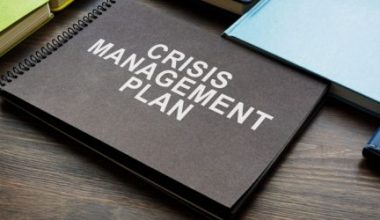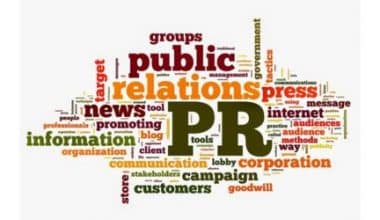Effective PR crisis management is an integral part of any business. Scratch that; it is a must. In a perfect world, your business will run smoothly, moving seamlessly from one daily activity to another without so much as a hitch. And there, you are, in your office, overlooking what you have built and enjoying the view while sipping high-quality Scotch from the Scottish Highlands.
Yes, I know you can see it. That must have been what you pictured when you set out to start your business. Or perhaps yours is online, so your own dream swapped out an office for a laptop on which you go over analytics. The Scotch is there, though.
Alas, things happen a bit differently in real life. Crisis happens. Instead of sipping Scotch, you’re running around putting out fires. Sometimes, literally. But how do you put out these fires before they set on other things? And how do you stop them from cropping up again?
These are the best steps to effective PR crisis management.
Key Points
- During a crisis, the main goal of a PR department would be to inform all interested parties about the current situation, potential risks, and planned actions.
- A well-prepared crisis plan should contain the first type of message that will be sent out to the world.
- Effective PR crisis management insulates your company from the negative consequences of these events, allowing you to move past the event as quickly as possible.
What is a PR Crisis?
A PR crisis is when any negative event or review related to your business gains traction in the public sphere. It could be related to an unhealthy business practice, a customer accident at your location, or an internal, employee-related issue. PR crises are important because they can taint your small business’s image in the minds of your customers.
Most businesses will face a public relations crisis at one time or another. Whether it’s a string of bad reviews or a serious executive scandal, a negative incident can have a powerful impact on a company’s reputation. No one expects you to be perfect, but they do expect you to be human. They will judge you based on the way you handle such instances.
While a PR crisis’s effect may be difficult to determine at first, it will definitely affect your business in the long run. Customers and clients want to interact with businesses they trust. Investors want assurance that their investments will pay off. If your company is caught in a PR storm, it puts that trust in jeopardy. All stakeholders — employees, suppliers, customers, and anyone you do business with — may start to wonder whether they should remain involved with your organization, and worker morale is likely to suffer.
If your response is not immediate and strong, social media can spread and exacerbate the issue. What happens next might be completely outside your control. A lack of a strong response will likely result in the escalation of false rumors and even endanger business relationships.
While there are some strategies you can implement to mitigate damage, once the information is out there, your business will have to roll with the punches and do its best to turn a wrong into a right.
When Should You React to PR Crises?
Knowing when and how to react are the two most important steps in PR crisis management.
Let’s deal with “when” first.
Not every negative comment constitutes a Public Relations crisis that could damage your brand reputation and require your CEO’s involvement. The real, big problem appears when a mishap spreads in business news.
You can implement a triage technique to assess the severity of the potential PR disaster. Assessing the problem early will help you manage the situation and not waste any resources on unnecessary actions.
You have to give any situation you consider threatening the right color: green, orange, or red.
Green tag
Green is for situations that don’t require any immediate actions from your organization. For example, when one of your competitors faces a crisis, that doesn’t necessarily affect your business.
There is a chance, though, that it will impact your business in some way. Monitor the situation closely and send in your crisis response team when needed.
Take a closer look at Google search results. If you see your company trending in the media, the tag can change from green to orange.
Orange tag
The orange tag is for situations that could possibly harm your business and destroy your consumers’ trust in your brand.
Think about one negative review out of hundreds of positive comments. You should keep an eye on it, but don’t summon your PR crisis team just yet.
Red tag
There’s a reason it’s called Code Red, and not Code Green or Code Orange. Red is when you have to act quickly and decisively. Your business reputation and revenue are in imminent danger, and you have to call in your PR response team.
Code red includes situations that could damage your brand reputation or disturb supply chains. These types of crises could potentially negatively affect the bottom line of your business. The harshest types of crises usually include an executive scandal or, unfortunately, some form of sexual harassment.
You want to tackle this type of PR issue quickly. Preferably, before your audience and the press get a sniff of a scandal.
Remember that situations can escalate quickly and go from code green to orange or even red in a couple of hours. That’s why it’s essential to monitor the situation constantly.
How to Spot a PR Crisis in Time
The first rule of crisis management in PR: the sooner you know, the better. You don’t want to be the last person to know that your house is on fire, so here are some rules for spotting a PR crisis on time:

Rule #1: Monitor mentions around your brand
If you haven’t already started media monitoring, it’s high time you did. Why?
You can learn what journalists and social media users say about your brand or the topics you care about in real time. It’s the single biggest reason to use media monitoring. With this intel, you can react appropriately and promptly, which is crucial in PR crisis prevention.
The immediate nature of alerts helps you find out about potential threats and tackle them before the media, your stakeholders, or your client base becomes concerned.
Media monitoring proves insightful all the time. When the situation is stable, you can use it to measure your PR results, like earned media. It also shows you potential new initiatives or cooperation opportunities.
Media monitoring gives you an understanding of what makes up the usual level of noise. With these numbers in hand, you can easily assess what changes should concern you.
Rule #2: Use media monitoring tools
You don’t have to scroll through the internet in search of media mentions to analyze. Media Monitoring tools do it for you, and even add more information, like sentiment, estimated reach, and context.
You can get real-time notifications about the content. Even before it appears on Google search.
There are some free tools for brand monitoring, like Google Alerts, but they can provide you with inaccurate and outdated mentions. For professional purposes, and especially in PR crisis prevention, you should definitely choose Google Alerts alternatives and limit the drawbacks.
Rule #3: Implement a social listening tool
Currently, there’s a high chance of a PR crisis coming from social media. That’s why your audience might be the first to spot a problem, way before it crosses your team’s radar.
However, with proper social listening tools, you can prevent an escalation in time. This can even save the company’s bottom line, as it can be vulnerable to an untreated PR crisis.
An example of a social listening tool is Prowly, which gives a wide range of options that are helpful in PR crisis prevention. It can help you understand how your audience feels about your brand. Also, you can gain insights into countries and languages with the highest engagement.
All of this helps you make decisions based on real data, instead of a gut feeling.
Noticing a sudden drop in sentiment and a peak in mentions’ number? That might be one of the first signs of a PR crisis on the rise.
Rule #4: Pay attention to the volume of mentions
The volume of mentions will naturally rise and fall depending on your PR activities, marketing, and other factors. With media monitoring in place, you can set up your baseline — the normal or expected amount of chatter.
Then an unexpected rise in volume certainly won’t leave you indifferent. It can be due either to a sudden earned media success, or the alarm to man PR crisis prevention stations. Together with sentiment analysis, they can keep you informed on how to react.
Rule #5: Use filters to focus on valuable mentions
Not all mentions bring value — especially if you track popular or generic keywords. Listening tools let you filter the results and show only what’s interesting for you, allowing you to extract the signal from the noise.
You can set various types of filters, like date range, article language, domain country, domain relevance, and sentiment. Group them together to get to the specific media mentions you need.
Rule #6: Set up alerts
Get email notifications for chosen types of mentions. You can choose what situations need your immediate attention. With alerts, you can react quicker and put out a fire before it spreads.
You can set up various alerts and choose who should get them. For example, your communication front line can be notified about negative sentiment mentions so that they can quickly assess a situation as it arises.
Rule #7: Create reports for crisis management
Using technology in Public Relations results in a lot of numbers. You can use reports to showcase the impact of your work. This way, you’ll be able to better communicate the value of your work to the board.
Showing relevant data is especially useful once you educate your stakeholders. If you need to explain to them why it is so important to have a PR specialist on board a crisis team, the numbers can help get your point across.
Insights you gather in a clear, easy-to-digest format will definitely help you prepare for an upcoming PR crisis. They are invaluable in assessing the efficiency of your strategies. With reports, you don’t have to go through each situation in detail – just the crucial information.
Rule #8: Keep an eye on your competition
You could limit your monitoring to your brand or go beyond and observe your competition.
If your competitor faces a PR crisis, you’ll be able to assess the situation and make sure it doesn’t impact your business. Also, you can analyze their reactions and draw insights for future use.
Steps to Manage a PR Crisis
Public relations crisis management aims to prevent or lessen the damage from unexpected events that may threaten the company’s operations or reputation. But how do you know you are facing a PR crisis and what measures should you undertake to cope with it?
Ask yourself these three questions:
- Question #1. Will this spoil your brand’s image?
- Question #2. Are there any threats to the safety and health of your workers or customers?
- Question #3. Can it lead to the loss of trust (inside or outside the company)?
If you answer “Yes” to any of the following questions, it’s time to act. Below are several steps you can take to manage a PR crisis effectively:
Steps to manage a PR crisis
How to Avoid a PR Crisis
Although it may appear intimidating, effectively managing and minimizing the impact of a PR crisis is achievable. By identifying and addressing risks proactively, you have the power to navigate through any challenges that may arise. Stay vigilant for signs that demand prompt attention and swift action, ensuring a smooth journey through turbulent times.
Implement rules for content
For every communication, it is imperative to ensure thorough checks and approvals. That includes social media messages, blog posts, press releases, or interviews. Nothing should go public without careful examination.
Develop comprehensive guidelines to govern all your posts and ensure their quality and credibility.
- Implementing social media guidelines is crucial for your brand to steer clear of blunders. These guidelines should be flexible to accommodate changes. Yet still steer your social media team and shape your company voice and language.
- A social media policy is important – it sets clear guidelines for your team to follow. By following this policy, you can proactively address potential legal issues and security concerns. Moreover, it serves as a guide on how your team should conduct themselves online, safeguarding the reputation of your brand.
Proofread, and proofread again
When conducting a comprehensive review, it is imperative to go beyond mere spelling errors. Verify the absence of sensitive company information or any content that may provoke offense. To mitigate risks and ensure protection, you should craft an efficient social media plan for PR crisis management.
More haste, less speed
Time is a crucial factor, but responding without proper consideration can lead to mistakes. Instead, take a moment to gather yourself, ensuring a composed response. Emotional and impulsive reactions can exacerbate the situation, so it’s vital to proceed cautiously.
Almost all companies will inevitably face a PR crisis at some point. Such circumstances can significantly impact your brand’s reputation. Mistakes happen, so don’t expect perfection. However, it’s crucial to maintain a human, authentic, and transparent approach.
Don’t be offensive
Brands frequently cross the line with their messaging. The solution is simple: seek input from others and consider their opinions. When in doubt, it’s better to retract it.
What Happens After a PR Crisis
After a crisis, your organization or brand enters a phase of recovery and reflection. This si where you systematically assess the effectiveness of your crisis management efforts. Analyze the data gathered during and after the crisis, evaluating the strengths and weaknesses of your response. This introspection is not about dwelling on the past but rather about extracting valuable insights for the future.
Additionally, use this period to conduct a thorough review of the changes implemented in response to the crisis.
- Have those changes been effective, or is there room for further refinement?
Engage with stakeholders to gauge their perception of your recovery efforts. Remember, the post-crisis phase is not merely a return to business as usual; it’s a chance for learning and growing. By learning from the experience, adapting strategies, and implementing positive changes, your organization can emerge stronger, more prepared, and with a renewed commitment to maintaining trust and credibility.
Examples of effective PR crisis management
Pepsi
Pepsi launched a campaign with a television commercial featuring Kendall Jenner. The “storyline” was Jenner casually leaving a modeling shoot where she joins protesters (whose “banners” display the Pepsi logo) and hands a Pepsi can to a policeman who opens and drinks it, much to the delight of the “protesters.”
However, the social justice element Pepsi was looking to benefit from was widely mocked and came across as superficial and insincere. So how did Pepsi handle this embarrassment? After sticking by it with a statement mentioning the importance of harmony, they went back on it, paused the ad entirely, and apologized for missing the mark.

The result? By admitting the error early on, Pepsi showed how much they understood they got it wrong and managed to save themselves from any long-term damage. People soon forgot about the incident, and Pepsi carried on being Pepsi.
Johnson and Johnson
Johnson & Johnson is an extensive healthcare and pharmaceutical manufacturer. One product, Tylenol, was found to contain cyanide, causing the deaths of seven people. The cause of the tampering was never solved.
Johnson & Johnson immediately halted advertising and sent nearly half a million messages to healthcare facilities. A safety warning was also issued to consumers. They could have attributed the incident to one-off sabotage and kept the products on the shelves, but they didn’t.
Instead, Johnson & Johnson pulled all of the products off the shelves, thus costing them millions to protect the public and avoid further outrage. In addition, they established a hotline for worried customers to address any concerns they may have regarding Tylenol capsules.

Johnson & Johnson’s response provided the benchmark in crisis management in public safety situations. As such, their products are still everywhere around the world today. Good job.
KFC
What could be worse than a chicken restaurant running out of chicken? KFC managed to do just that in the UK in a situation called Chickengate. They simultaneously had significant problems with suppliers, logistics companies, and other supply chain issues, causing a lack of chicken arriving at restaurants resulting in their restaurants needing to close.
However, the way that KFC dealt with it was to see the funny side. They made light of the situation and were honest. They made clear that they would not sacrifice quality. By conveying their standards, they prioritized their customers and reputation.

KFC then followed up with this:

It is noticeable that they followed up on this announcement with a hilarious campaign to poke fun at themselves. Featured in UK newspapers, the ad apologized for needing to close some stores. It also worked to increase their brand recognition. You could even argue that they came out of this better than before the chicken shortage started.
Red Cross
Imagine you work at the Red Cross in their social media team and accidentally confuse their social media channel with your own. Well, this is precisely what happened to one unfortunate worker.
This was the tweet from @RedCross:

Red Cross responded well to the situation, seeing the funny side and explaining the error.

This tweet from the Red Cross was cleverly turned into an opportunity to engage with the public. They posted on their corporate blog to explain the situation, show humanity, and engage fans. The employee who made a mistake even weighed in with the same tone of humor and humility. It can look shady when you delete a tweet if you have a large audience who notices these things, and anything “deleted” on social media can surface to haunt you later.
However, the Red Cross did the right thing by apologizing for the tweet, deleting it, and explaining with humor that it was all an unintended error. A crisis was averted.
The Virgin Group
A Virgin Galactic aircraft crashed during a test flight in the Mojave Desert in California. One pilot was killed and another was seriously injured. The company took several steps to manage the crisis. Firstly, they provided the public details on the crash. They then connected with the families of the two pilots to show their empathy.

Virgin immediately took responsibility for the tragic incident. Company founder Richard Branson also expressed his sympathies. This is one of the best crisis management examples.
Burger King
When attempting to celebrate and draw attention to its female chefs, Burger King offered this tweet:

Needless to say, the general public did not take the tweet well. The intention was to make fun of this sexist phrase, but the tone got lost on Twitter. Burger King UK deleted the Tweet and immediately posted an apology and an explanation of their intentions, quickly calming the fallout.

Gucci
This is an example of a crisis that was not immediate and became an issue one month later. Despite that, it was pretty severe.
Gucci created a polo neck jumper that was said to resemble blackface. The incident provoked strong reactions from many as people took to social media to share their thoughts. Gucci was quick to act, though, when this happened.
As a precaution, they removed the sweater from store shelves, followed by an apology on their official Twitter account. They described the event as a “powerful learning moment.” This was viewed as a gesture of respect and humility in the eyes of their customers, and all was well again in the house of Gucci.

By announcing plans to launch global scholarship platforms around the globe, the company presented itself in an extremely positive light.
Conclusion on effective PR crisis management
No one expects to experience a PR crisis. But in business, serious events can and do occur. During a crisis, the main goal of a PR department would be to inform all interested parties about the current situation, potential risks, and planned actions. A well-prepared crisis plan should contain the first type of message that will be sent out to the world.
Effective PR crisis management insulates your company from the negative consequences of these events, allowing you to move past the event as quickly as possible.
Recommended Articles
- What Does Evergreen Mean In Business? Timeless Tactics for Lasting Growth
- How To End a Conversation Politely & Professionally: Detailed Tips
- Crisis Manager: Unveiling Expert Strategies and Insights
- HOW TO WRITE A PROFESSIONAL BACKGROUND: Detailed Guide With Free Templates
- HOW TO REPORT A BLACKMAIL: All You Need To Know






